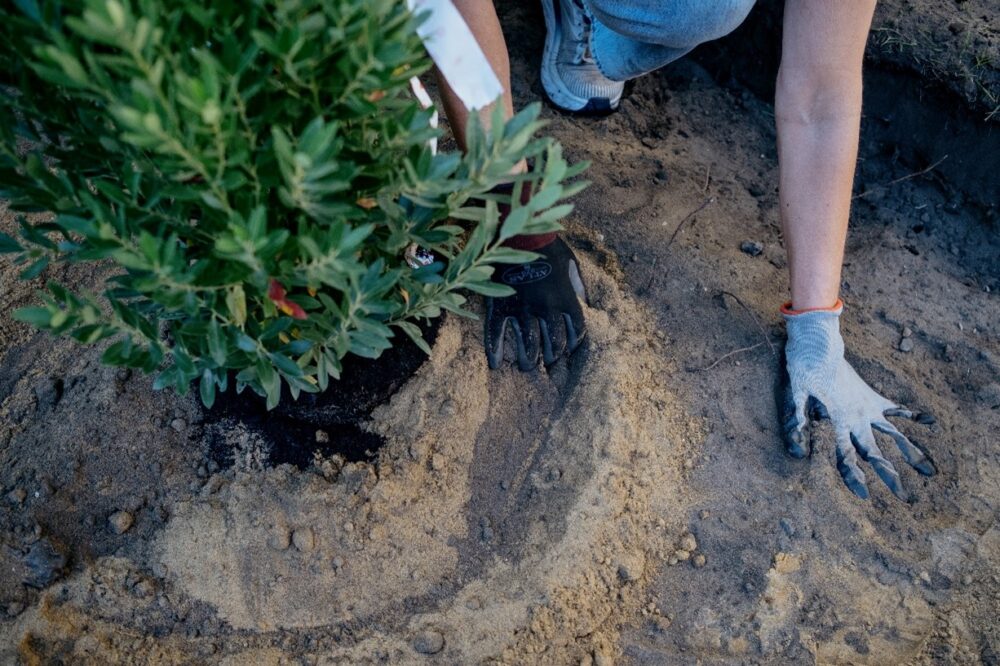We have much more to do and your continued support is needed now more than ever.
Why the 2024 Farm Bill Can’t Wait

The Farm Bill is a multi-year legislative package that touches on many aspects of farm policy, including support for farmers to adopt sustainable practices that promote wildlife habitat, soil and water conservation, and carbon sequestration. It is reauthorized about every five years and Congress passed the most recent Farm Bill in 2018. With billions of dollars dedicated to conservation practices in the 2018 Farm Bill, this is one of the most important pieces of legislation for wildlife across the country.
Funding from this legislative package has enabled farmers and ranchers to partner with the United States Department of Agriculture (USDA) to support on-the-ground conservation practices and projects. For instance, USDA’s Sage Grouse initiative partners with over two thousand farmers to restore eight million acres of sagebrush habitat for the iconic sage grouse. These efforts also produce co-benefits for other species that depend on sagebrush, such as the Brewer’s sparrow, green-tailed towhee, deer, and pronghorn.
Conservation funding for the Farm Bill
The 2022 Inflation Reduction Act (IRA) enacted many wins for wildlife, including an additional $20 billion for key USDA Natural Resources Conservation Service programs, focusing on practices supporting climate-smart agriculture. Additional resources targeted at these important programs are helping to meet the swell of producer interest in voluntary private-landowner-driven conservation programs.

While funding is still not meeting demand, the IRA dollars made an important step toward more farmers, producers, and landowners accessing conservation programs. According to a recent poll, at least three out of four farmers supported increased funding for conservation programs.
The IRA funding presents a unique opportunity for Congress to invest in climate-smart agricultural practices but, without swift action, the opportunity will be lost. Congress has yet to reauthorize the 2018 Farm Bill and include this money in the total funding for this and future Farm Bills.
Incorporating the IRA funding and its related climate-smart provisions into the Farm Bill will preserve this important investment in conservation funding for years to come–but only if Congress acts before the end of its current session. Once USDA spends next year’s funding from the IRA, Congress cannot include those dollars in a new Farm Bill as a base sum for conservation programs in the future. That is almost a six-billion-dollar lost investment if Congress can’t protect these funds by passing a new Farm Bill by the end of the year.
Conservation programs have too long been overburdened and underfunded; the funding from the IRA is an important opportunity to increase access to these resources for farmers to adopt sustainable practices on their farms.
The current 2018 Farm Bill extension expired on September 30th, 2024. The expiration of the extension has varying effects on different conservation programs. While most of the conservation programs can continue to operate unimpacted until they run out of funds, some, like the Conservation Reserve Program, can no longer enroll applicants until an extension or new Farm Bill is passed.
This prevents the USDA from serving farmers, ranchers, and landowners who want to adopt conservation practices on their land. The rollover to the new calendar year could also pose significant impacts on other agricultural programs authorized by the Farm Bill and have profound consequences that would hurt many parts of the economy.

Wildlife faces a multitude of threats, including habitat loss, climate change, invasive species, and more. Without resources to protect and restore wildlife and habitat, we are bound to continue to see populations of wildlife species decline. Funding from this legislation has demonstrated success at restoring wildlife populations.
The additional funding from the IRA for climate-smart agriculture is an important part of supporting voluntary Farm Bill conservation programs which address climate change, reverse habitat loss, and promote sustainable farming practices. These resources are a win-win for wildlife and producers. Congress should pass a new Farm Bill that protects the climate-smart agriculture funding from the IRA before the end of the year.





















